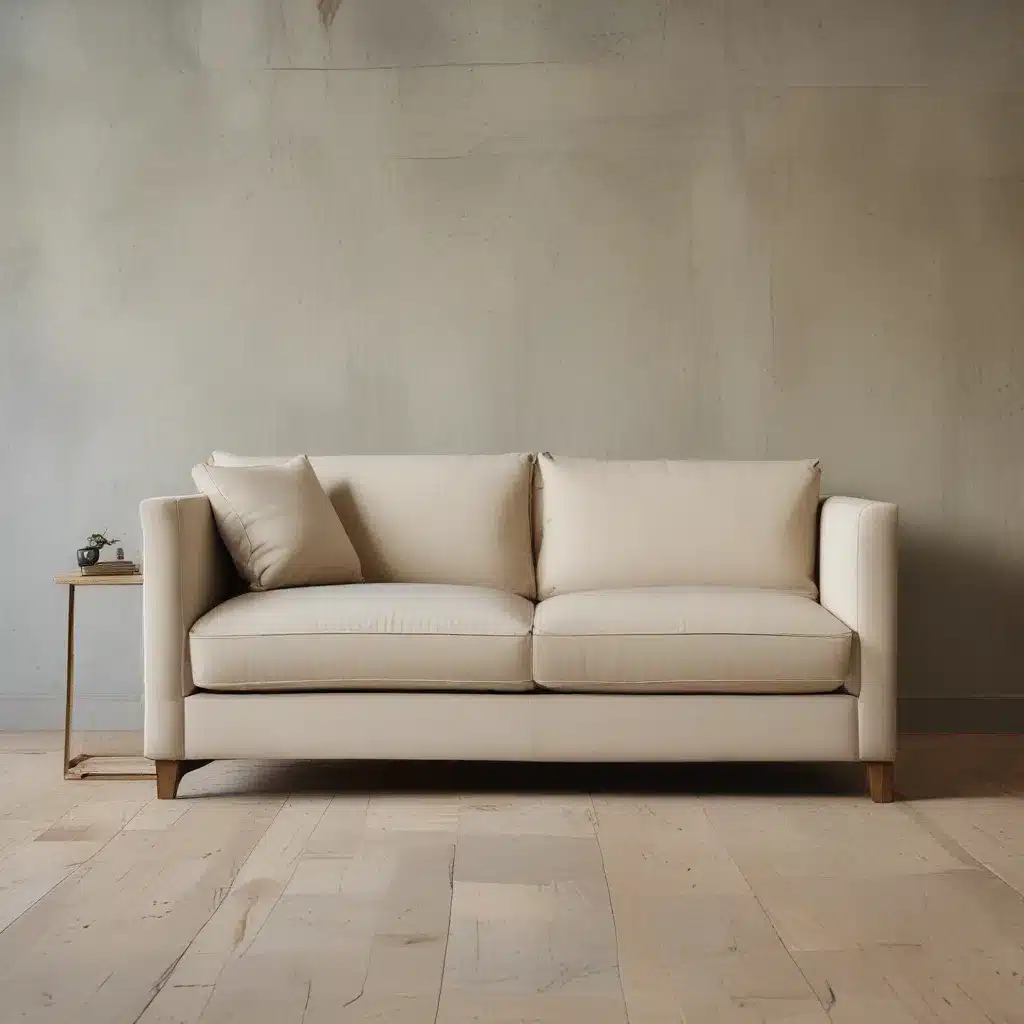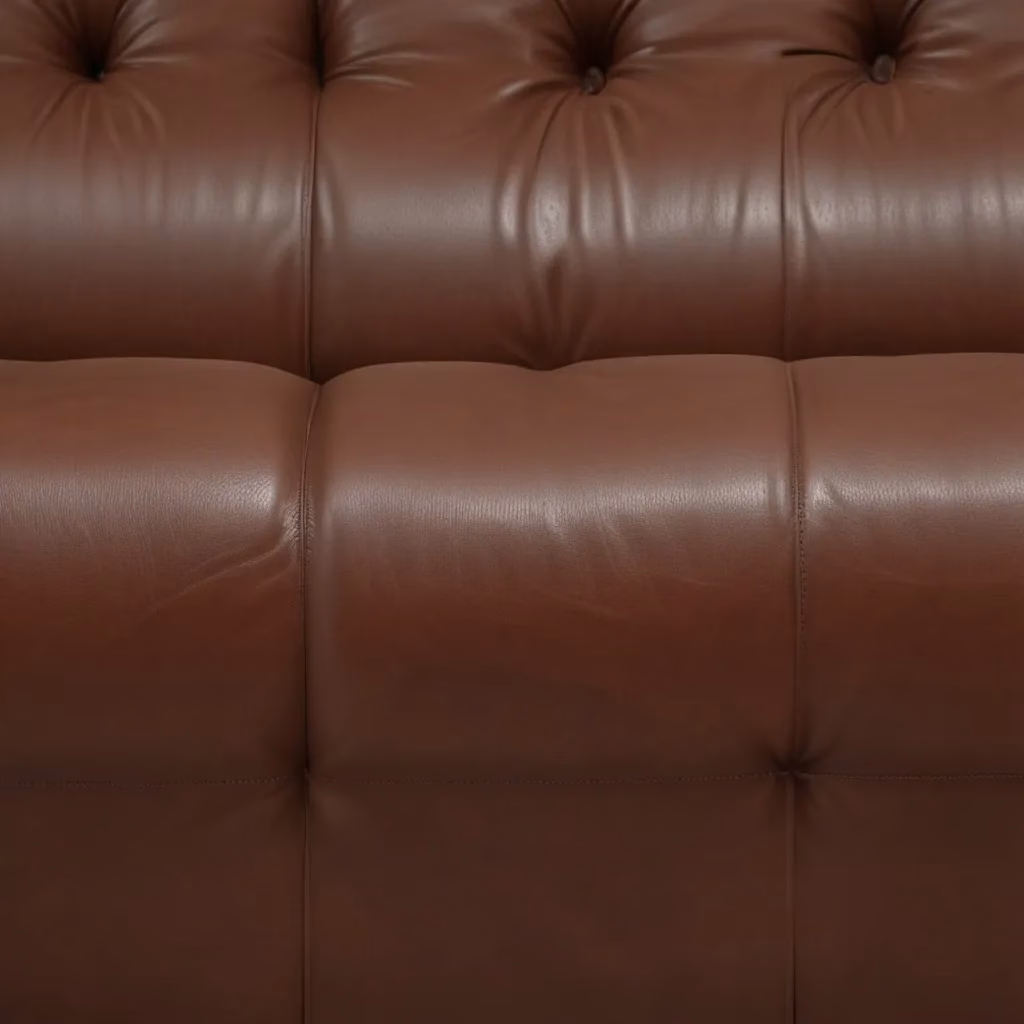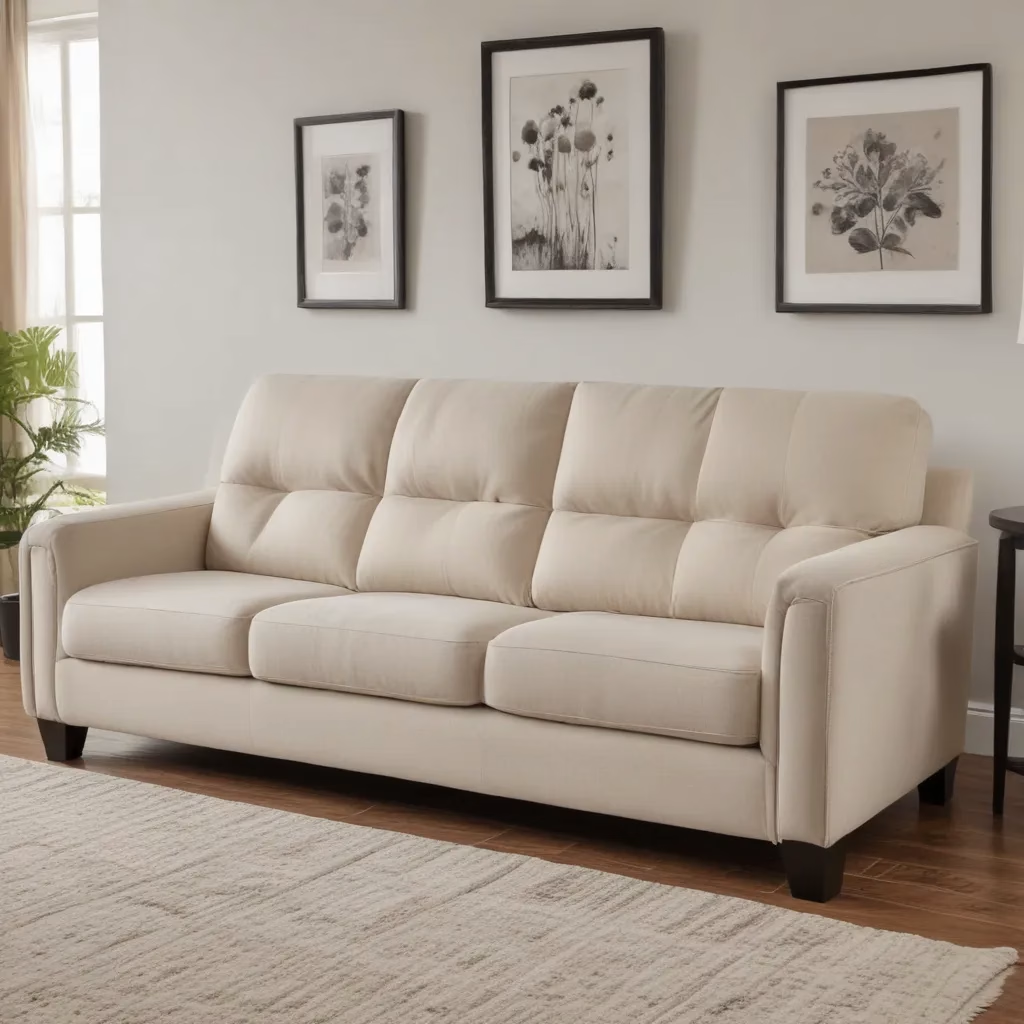The Journey Begins
Not too long ago, I found myself in a bit of a dilemma. You see, I had just moved into a new place – my very first home (well, technically a condo, but close enough!) – and I had absolutely no furniture to speak of. Nothing beyond a rolling computer chair and a sad little computer table, that is. It was a clean slate, sure, but also a daunting one.
As I set out to furnish my new abode, I quickly realized that the prices for decent-looking couches were downright staggering. I’m talking anywhere from £600 to £2,000 – and that was for the designs I actually liked. The idea of spending upwards of £1,000 on a single piece of furniture just didn’t sit well with me.
Then, an epiphany struck: Why not make my own sofa? After all, how hard could it be, right? As I dug into my research, I was surprised to find that there wasn’t a whole lot of easily accessible information out there on the hows and whys of sofa construction. Sure, there were a few scattered resources, but nothing truly comprehensive.
Well, my friends, consider this article your one-stop-shop for all things sofa-related. I’m about to take you on a deep dive into the world of sofa design and construction, sharing the insights I’ve gained through my own adventure in DIY furniture-making. Get ready for an in-depth guide that’s equal parts informative and entertaining. Let’s dive in!
Traditional vs. Modern Sofas
Before we get into the nitty-gritty of sofa-making, it’s important to understand the two main approaches to sofa design: the traditional and the modern.
Traditional couches are those vintage-inspired beauties you might see adorning the pages of a historical home decor magazine. Think intricate, floral-patterned upholstery and ornately carved wooden frames. These sofas have the cushions built right into the fabric, with springs tied down to the bottom. The upholstery work required to create these traditional masterpieces is nothing short of an art form.
On the other hand, modern sofa designs tend to be much more streamlined and minimalist. The cushions are separate from the frame, allowing for easy replacement and maintenance. The supporting structure also utilizes a different system, often relying on springs or webbing rather than the integrated approach of traditional sofas.
Given my relative lack of specialized upholstery skills, I opted to go the modern route for my own DIY project. The traditional sofa may have its charms, but the level of complexity and specialized tools required just didn’t align with my abilities (or budget) at the time. Plus, let’s be real – when most people think “sofa,” the image that comes to mind is likely the clean-lined, contemporary variety.
The Importance of Support
Now, you might be wondering, “Why can’t I just slap a big ol’ cushion on top of a solid wooden frame and call it a day?” Well, my friend, there’s a method to the madness when it comes to sofa construction, and it all comes down to support.
You see, a solid wooden base puts all the stress directly on the cushion, causing it to wear out much faster. That’s where the two main support systems – springs and webbing – come into play.
Springs, particularly the high-end “eight-way tied” variety, provide the ultimate in comfort and durability. These coiled marvels are evenly spaced across the base of the sofa and tied together in a criss-cross pattern, allowing the weight to be distributed evenly no matter where you sit. It’s this sophisticated system that helps explain why the really nice sofas can cost upwards of £2,000.
On the more budget-friendly end of the spectrum, you’ve got webbing – a series of semi-elastic bands woven across the frame. While webbing may not be as robust as springs, it’s a viable (and significantly cheaper) option, especially for sofas that won’t see heavy use.
For my own project, I opted for the webbing approach. After all, I was on a bit of a shoestring budget, and I figured the casual use my sofa would see didn’t necessarily warrant the premium spring system. That said, if you’ve got little ones who love to bounce around or you plan on using your sofa as a personal trampoline, springs might be the way to go.
Sofa Dimensions: Getting the Proportions Right
Ah, the age-old question: “What size should my sofa be?” It’s a critical consideration, and one that requires a bit of careful planning.
The standard dimensions for a three-seater sofa are usually around 85 inches long, 35 inches deep, and 35 inches high. Now, before you start measuring and cutting, it’s important to note that these are just rough guidelines. The actual “ideal” size can vary based on personal preference, room layout, and the specific design of your sofa.
One important factor to consider is the seat height. The most common standard is around 18 inches from the floor to the top of the seat cushion, but this can range anywhere from 13 to 20 inches, depending on your preferred level of comfort and the overall aesthetic you’re going for.
The seat depth, or the distance from the front of the cushion to the back, is typically around 20 to 21 inches. And the height of the back can vary as well, with 15 inches being the standard, but with some designs opting for a slightly taller or shorter profile.
But wait, there’s more! You’ll also want to factor in the seat incline – that is, the angle of the seat relative to the floor. Most experts recommend a 90 to 100-degree angle at the front for optimal leg comfort, and a 5 to 15-degree recline in the back for a more relaxed posture.
Phew, that’s a lot of numbers to keep track of, isn’t it? Don’t worry, I went through the same process of meticulously measuring and remeasuring when designing my own sofa. In the end, I decided to keep things simple and go with a straightforward, right-angled frame, relying on the cushions to provide the desired comfort and support.
Choosing the Right Fabric (and Avoiding Sewing Woes)
With the frame and support system squared away, it’s time to turn our attention to the all-important sofa upholstery. This is where you get to flex your creative muscles and really put your personal stamp on the finished product.
For my sofa, I knew I wanted something soft and cozy, but not necessarily leather. After a bit of research, I settled on microfiber as the perfect fabric for my needs. Not only is it relatively inexpensive, but it’s also relatively thin, which made it easy to work with using a standard sewing machine and needle.
Now, a quick word of caution: Upholstery fabric is quite a bit thicker than your average sewing material, so you’ll need to make sure your machine and needles are up to the task. Trust me, you don’t want to end up with a broken needle and a frustrated sewing session.
As for the actual process of cutting and sewing the fabric, I followed a fairly straightforward approach. I measured out the pieces, adding an extra inch or two for the seam allowance, and then carefully cut them out. When it came time to assemble the covers, I found that compressing the foam cushions in a vacuum-sealed bag made it much easier to stuff them into the fabric sleeves.
And let’s not forget about those all-important accent pillows! To complement the overall look and feel of my sofa, I decided to create a trio of pillows in a gradual blue gradient. These little touches can really help to tie the whole design together and make your DIY masterpiece look like it was plucked straight from the pages of a high-end furniture catalog.
Bringing It All Together: The Final Assembly
Alright, the moment of truth has arrived – it’s time to put all the pieces together and see our sofa vision come to life. Let’s dive in, shall we?
First up, the frame. I opted for a mix of traditional joinery techniques, like mortise and tenon joints, as well as some more modern pocket screw construction. The goal was to create a sturdy, well-engineered base that could stand the test of time (and the occasional impromptu trampoline session).
With the frame in place, it was time to tackle the webbing. Now, this part requires a bit of elbow grease, as you’ll need to use a specialized tool to really stretch and tension those semi-elastic bands across the frame. But trust me, the satisfying “drum” sound they make when properly installed is a reward in itself.
Next up, the cushions. After letting the foam inserts decompress for a day or two (those vacuum-sealed packages can be real space-savers), I carefully wrestled them into their custom-made covers. And let me tell you, getting the sizing just right is crucial – I learned that the hard way when my seat cushions ended up hanging over the edges a bit more than I had hoped.
Finally, the moment of truth – staining and sealing the wooden frame. I applied a single coat of the stain, following the manufacturer’s instructions to the letter, and then topped it off with a protective sealant. The end result? A beautifully rich, warm finish that really makes the whole piece pop.
And there you have it, folks – my very own custom-built sofa, lovingly crafted from the ground up. It may not be perfect, but it’s mine, and that’s what makes it special. Who knows, maybe I’ll even tackle a coffee table next to complete the living room set. The possibilities are endless when you’re willing to roll up your sleeves and get a little DIY-happy.
Closing Thoughts: The Joys (and Challenges) of Sofa-Making
As I reflect on my journey of building a sofa from scratch, I can’t help but feel a sense of pride and accomplishment. Sure, it was a labor-intensive process, and there were certainly a few bumps in the road (I’m looking at you, ill-fitting cushions), but the end result is a piece of furniture that I can genuinely call my own.
And you know what? I think that’s the real beauty of DIY projects like this. It’s not just about saving money (although that’s certainly a nice perk) – it’s about the sense of personal investment and the opportunity to create something unique. When you put in the time, effort, and care to build a sofa from the ground up, it becomes so much more than just a place to sit. It’s a reflection of your style, your problem-solving skills, and your willingness to tackle a challenge head-on.
Of course, I’d be remiss if I didn’t acknowledge the challenges that come with DIY sofa-making. The specialized tools, the precision required for those intricate joints, the upholstery work – it’s not for the faint of heart. But for those willing to dive in and get their hands a little dirty, the rewards can be truly remarkable.
So, if you’re toying with the idea of building your own custom sofa, I say go for it! Just be sure to do your research, gather the necessary tools and materials, and don’t be afraid to embrace a few creative missteps along the way. After all, the journey is half the fun. Who knows, you might just end up with a one-of-a-kind piece of furniture that becomes the envy of all your friends (and the Sofa Spectacular showroom).




